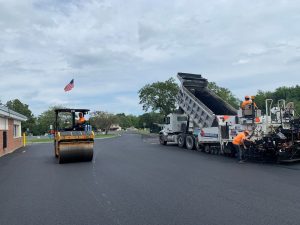
Lawn Care Tips: Garden and Grass
Contacting your local Grass Supplier and having them give you a fresh roll of grass that you can put in your garden and lawn is easy; the hard part is actually maintaining it and making sure that the things in your lawn do wilt. So, you have to keep it in the best condition that you possibly can; here’s how you can do that:
Mowing
Do It At The Right Height
Mowing is very important and is one of the best ways that you can maintain the health and just the overall appeal of your lawn (and the grass) but you have to do it right. You should always set your mower blade to the right height and for most grass types, a height of 2.5 to 3 inches is good enough.
Be very careful to not cut the grass too short because this can damage the roots and make your lawn have a higher chance of growing weeds, which you definitely do not want.
Do It Regularly
You should mow your lawn frequently because grass grows quickly and has to be well-maintained to be healthy. This could entail cutting the grass once a week during the growing season. As said before, cutting the grass helps it stay healthy and promotes thick, robust growth.
Watering
Deep and Infrequent Watering
Since grass is a plant, it needs to be watered deeply. However, sparingly applied water will help the grass roots to spread farther into the soil, increasing their drought resistance. We recommend that you water your lawn for about 30 minutes, 2-3 times a week, depending on the weather that you are currently experiencing and the type of soil your lawn has (ask your supplier for this because it varies).
Early Morning Watering
Watering your lawn early in the morning has shown result of minimizes water loss from evaporation and allows the grass blades to dry out during the days, Also it helps shield against disease. So watering a plant also an important step to grow plant healthy way.
Fertilizing
Balanced Fertilizer
It really matters to use a fertilizer which is balanced and able to supply your grass with nutrients. You must locate a fertilizer with an equal distribution of nitrogen (N), phosphorus (P), and potassium (K). 10-10-10 fertilizer, which contains 10% of each nutrient, is a common type.
Aeration
Use the following procedure to assist your grass get healthier and reduce compaction: creating microscopic holes in your lawn to allow air and water to seep deeper into the ground. Ensure that you perform this at least once a year, or have experts done it for you.
For a few months, see how your grass feels and looks after giving them a try. Then, let us know what you think, and until then, be cautious! If you follow these methods, you can definitely preserve the health and beauty of your lawn!










